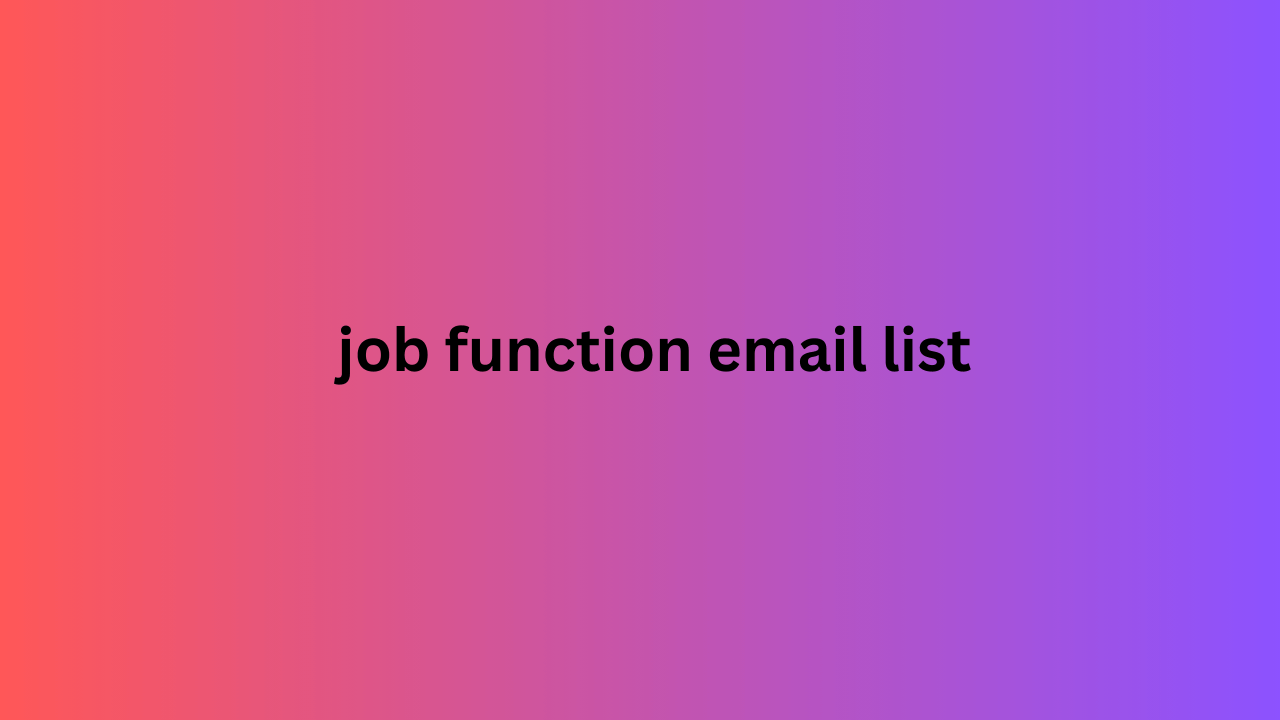You can start using it for free
It is easy to use
It is very agile
It promises many solutions
So the problem will never be acquiring it, the problem will always be answering the question:
I know what I expect from CRM, but I have no idea how to get it.
It's normal. It happens to all of us. Because the pains that CRM promises to solve are very big:
Customer control: knowing who are potential customers and who are not.
Prevent the customer from leaving if the seller leaves.
Stop losing money because the seller doesn't follow up.
Avoid poor follow-ups, poorly written emails, and blows to the company job function email list because salespeople have no idea how to express themselves via email.

Have a real sales projection based on the daily work of the sales force.
Understand the activity levels of each salesperson and know which ones have the greatest effort and greatest effectiveness.
Complete control of the sales force and commercial results.
These are powerful promises that we cannot ignore. If we manage to apply them and rely on them, our company will be ready to grow with:
Order.
A strong focus on continuous improvement.
Maximum waste reduction.
That's why, based on this promise, we set out to open our HubSpot CRM accounts. That's when problems like these start:
1: Create accounts for each user
The HubSpot system works with users and accounts. The problem when the entire team opens an account in HubSpot on their own is that they have independent accounts with independent information. This does not allow them to work as a team. In fact, it creates more problems because each salesperson creates their own separate and independent database.
2: Not having clear the milestones that must be followed to achieve a sale
CRM works with custom rules that define what stage of sales a potential business is in and its ability to become a customer in the future.
When this is not clear, each seller has their own method and that creates unmanageable chaos.
Also, it is impossible to configure CRM without steps to deliver true insights.
3: Not having a rating and classification mechanism for clients and businesses
If the way in which labels and names should be generated, especially for businesses, is not clear, at the end of the day there is no data to analyze because all the information will come with labels such as: BUSINESS 1, BUSINESS 2, for example.
With a good tagging system, you can correlate closing variables, income and business generation to know what went wrong and needs to be resolved, and what went well and needs to be improved.
4: Not taking productivity tools into account
The life of a salesperson has a high component of repetitive tasks that can be optimized, automated and improved; that is what productivity tools are for.
When productivity tools such as
Tasks
Task queues
Reminders
Templates
There is a lot of time that is wasted unnecessarily doing these tasks and a lot of information that is lost by not having these mechanisms.
5: Enter any contact database you find, regardless of whether they are useful or not
Finding a database is easy, making it useful is not.
The temptation is to upload every contact we find to the system because we don't get charged for contacts.
The problem is that you will have a lot of useless and forgotten contacts that will have no use or meaning and will complicate the daily sales work because no one will take them into account and they will be an impediment to filtering and finding the names and data that do work.
